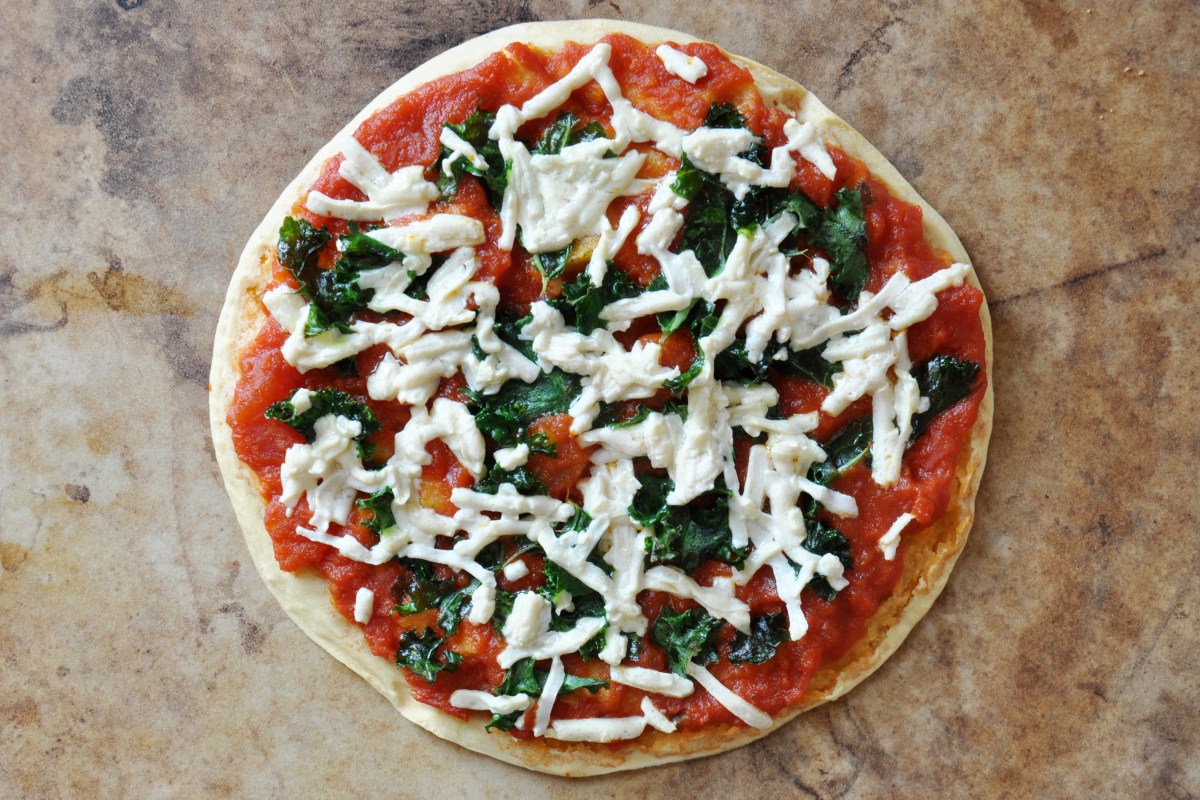Embark on a culinary journey exploring the delightful world of gluten-free pizza crusts! From the subtly sweet cauliflower base to the robustly earthy chickpea flour alternative, this exploration unveils a spectrum of flavors and textures, catering to diverse dietary needs and preferences. We’ll delve into the health benefits and drawbacks of each option, providing detailed recipes and techniques to guide you in crafting the perfect gluten-free pizza at home.
Imagine the satisfying crunch of a perfectly browned cauliflower crust, its delicate flavor complementing a vibrant array of toppings. Picture the satisfying chewiness of a chickpea flour crust, its subtle nutty notes providing a unique foundation for your culinary creations. This guide empowers you to navigate the world of gluten-free pizza making with confidence, offering clear instructions, helpful tips, and mouthwatering results.
Cauliflower Crust Recipes and Techniques

Creating a delicious and satisfying gluten-free pizza starts with the crust. Cauliflower offers a surprisingly versatile and healthy alternative, resulting in a crust that’s both light and flavorful. The key to success lies in properly preparing the cauliflower and managing the baking process to achieve the perfect crispiness.
Cauliflower Crust Recipe
This recipe yields a 12-inch pizza crust.
Ingredients:
- 1 large head of cauliflower (approximately 2 pounds), riced
- 1 large egg, lightly beaten
- 1/2 cup grated Parmesan cheese
- 1/4 cup almond flour (or other gluten-free flour)
- 1 teaspoon garlic powder
- 1/2 teaspoon dried oregano
- 1/4 teaspoon salt
- 1/4 teaspoon black pepper
- 2 tablespoons olive oil
Instructions:
- Rice the cauliflower: Pulse the cauliflower florets in a food processor until they resemble rice. Aim for a consistency that’s mostly small pieces, not a completely smooth puree.
- Dehydrate the cauliflower: Spread the riced cauliflower on a baking sheet lined with parchment paper. Bake at 400°F (200°C) for 20-25 minutes, or until most of the moisture has evaporated and the cauliflower is slightly tender but not browned. This step is crucial for preventing a soggy crust.
- Combine ingredients: In a large bowl, combine the dehydrated cauliflower rice, egg, Parmesan cheese, almond flour, garlic powder, oregano, salt, and pepper. Mix thoroughly until well combined.
- Shape the crust: Press the cauliflower mixture onto a parchment-lined baking sheet, forming a 12-inch circle or your desired shape. Use your hands to create an even thickness, about 1/4 inch.
- Pre-bake the crust: Bake for 15-20 minutes at 375°F (190°C), or until the edges are lightly golden and the crust is firm to the touch. This pre-baking step helps to crisp the crust.
- Add toppings and bake: Remove the crust from the oven, add your favorite pizza toppings, and bake for another 10-15 minutes, or until the cheese is melted and bubbly and the toppings are cooked through.
The Importance of Ricing and Dehydrating Cauliflower
Properly ricing the cauliflower ensures an even texture throughout the crust. Too large of pieces will result in uneven cooking and a less cohesive crust. Dehydrating the cauliflower is essential for removing excess moisture. This prevents a soggy, gummy crust and allows the crust to crisp up during baking. The cauliflower should be tender but not mushy after dehydrating.
Tips for Achieving a Crispy Cauliflower Crust
Several techniques contribute to a perfectly crispy crust:
- Don’t overcrowd the baking sheet: Ensure adequate space between the crust and the edges of the pan for even airflow and browning.
- Use parchment paper: This prevents sticking and allows for easy removal of the crust from the baking sheet.
- Monitor the baking process: Keep a close eye on the crust during both the pre-baking and final baking stages to prevent burning. Adjust baking time as needed based on your oven.
- Consider a pizza stone: A pizza stone can help to create a crispier crust by providing even heat distribution.
Assembling and Baking a Cauliflower Pizza: A Visual Guide
Imagine a pristine white baking sheet, gleaming under the kitchen light. On it rests a perfectly formed circle of pale golden cauliflower crust, its edges gently browned and slightly raised. A vibrant tapestry of red tomato sauce swirls across the surface, followed by a cascade of mozzarella cheese, its creamy white contrasting sharply with the rich red. Finally, scattered across the cheese are plump, juicy pepperoni slices, glistening with a subtle sheen of oil. This masterpiece slides into a preheated oven, the heat transforming the cheese into bubbling pools of golden goodness, while the crust crisps to a satisfying perfection. The aroma of baking pizza fills the kitchen, a delicious promise of the feast to come. The finished pizza emerges from the oven, a culinary triumph, ready to be sliced and shared.
From the simple elegance of a cauliflower crust to the hearty earthiness of a chickpea flour base, the world of gluten-free pizza is a vast and delicious landscape. This exploration has revealed the versatility and adaptability of these alternatives, showcasing how creativity and careful technique can yield truly satisfying and flavorful results. Whether you’re a seasoned baker or a kitchen novice, the journey to crafting your perfect gluten-free pizza starts here, offering a world of flavor and culinary possibilities waiting to be explored.
Question Bank
Can I make the crust ahead of time?
Yes, both cauliflower and chickpea flour crusts can be partially prepared ahead of time. The cauliflower crust can be prepped and refrigerated until ready to bake, while the chickpea flour crust can be made completely ahead and stored in the refrigerator for a day or two.
What if my crust is too dry?
Add a tablespoon or two of water or milk to the dough to increase moisture. For cauliflower crust, ensure sufficient dehydration to prevent sogginess.
What are some good topping ideas for gluten-free pizza?
Experiment with fresh vegetables, lean proteins like grilled chicken or shrimp, flavorful cheeses, and herbs. Avoid overly watery toppings that could make the crust soggy.
How do I store leftover gluten-free pizza?
Store leftover pizza in an airtight container in the refrigerator for up to 3 days. Reheat gently in a pan or oven to restore crispness.


